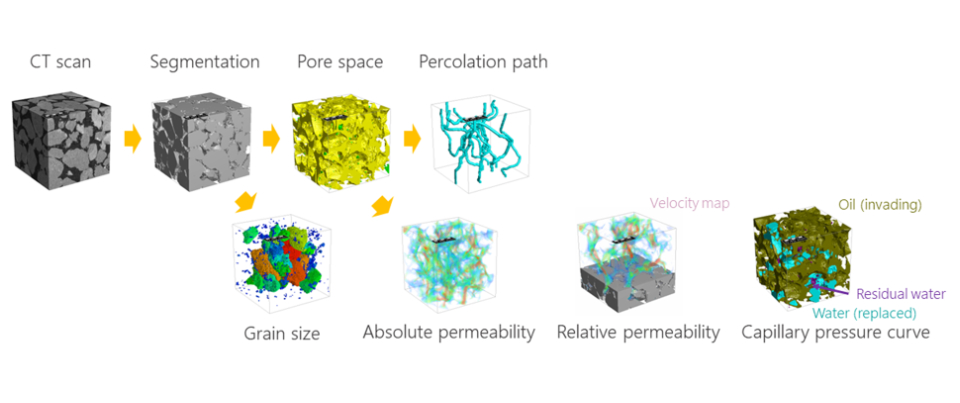Digital Rock Physics Workflow – Faster And Easier Than You Might Think
Please note that after activating the video, data will be transmitted to YouTube.
More Information
Abstract
Digital Rock Physics (DRP) can supplement and sometimes replace the expensive and time-consuming experiments required to guide development and production of oil and gas reservoirs. This saves time and money. Furthermore, because DRP is a non-destructive technique, you can perform multiple numerical experiments on exactly the same sample. You can also run multiple analyses to test different scenarios on one sample simultaneously for uncertainty assessment.
You can use DRP to calculate the permeability throughout the reservoir model by scaling experiments and calculations on millimeter size samples to the kilometer scale. To consider different rock formations and increase the accuracy of predicted permeabilities, you can also supplement the analysis with CT data on meter scale samples.
DRP uses intensive modeling and simulations to make this all possible, but the process of using it doesn’t need to be intensive. With a small micro-CT scanner and computer, you can get started. Most calculations can be done in minutes to a few hours.
This presentation gives you an overview of an easy DRP workflow, starting with collecting a computed tomography image of a sandstone plug, then creating its digital model, analyzing its properties, and simulating a capillary pressure curve.
